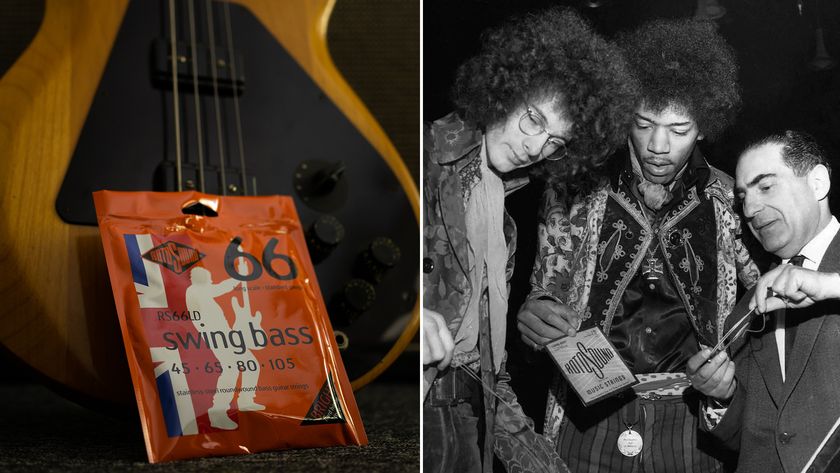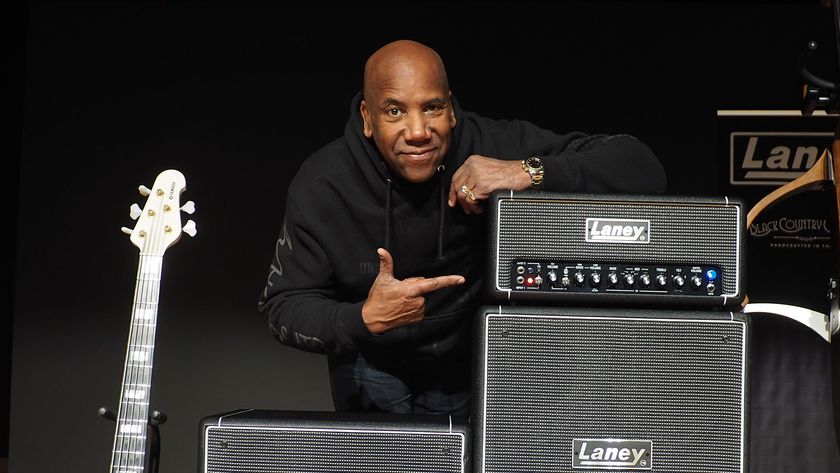You’re at a Gig and Your Axe Has Gone Dead? It’s Time for Guitar Troubleshooting 101
Don’t panic — it’s probably something simple!
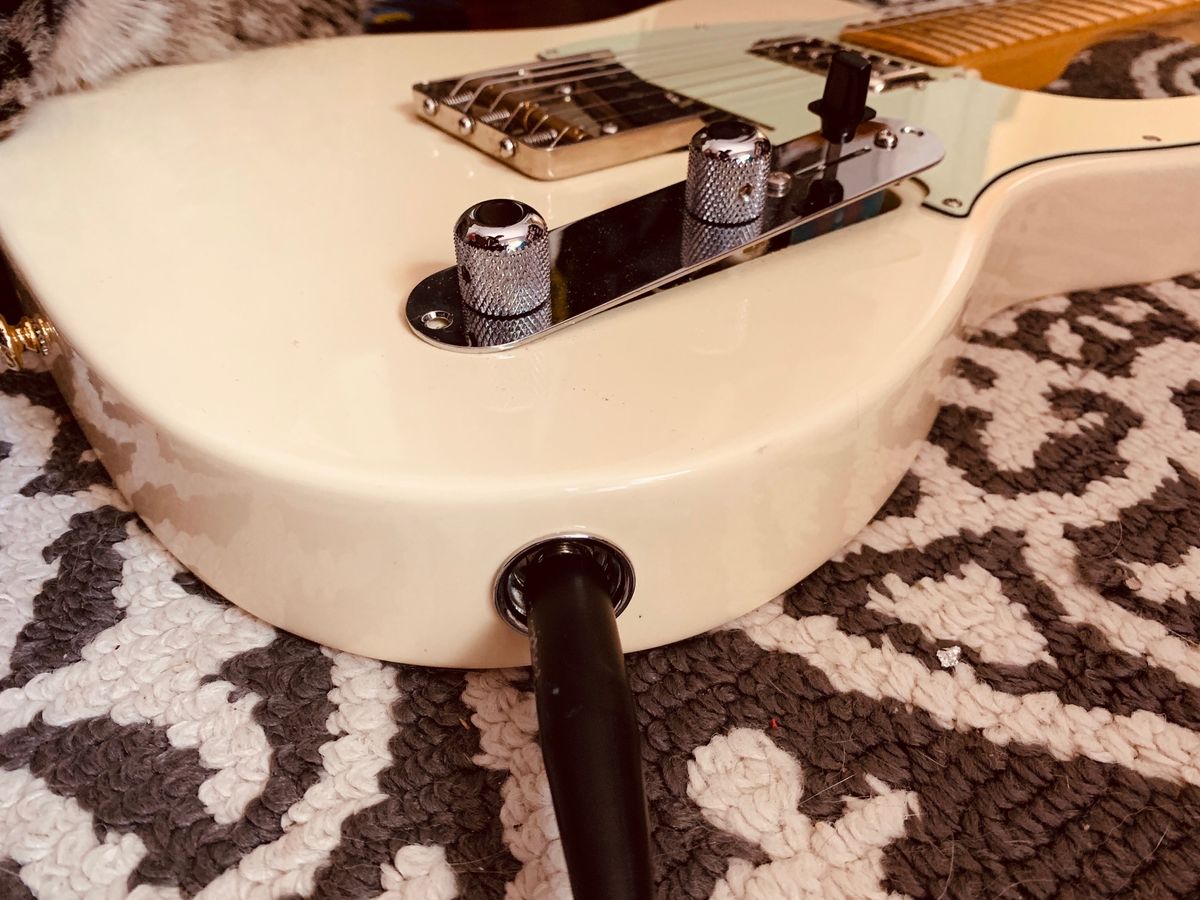
It’s one of the most traumatic moments in a guitarist’s life. You’re playing a gig. You look, feel and sound great. Now it’s time to take your first face-melting solo of the night. You step forward, put on your best “Oh!” face (that’s an Office Space reference, folks) and ... nothing! Your axe has gone dead.
At that horrible moment, you just want someone to give you a hug and tell you everything is gonna be just fine. And it probably is! You just need to figure out the problem.
Here’s a thought: Before you start cursing out your beloved guitar, who says it’s his or her fault in the first place? You should always make sure your amp and cables are working before you start noodling around and showing off your new customized pickguard. And, of course, you should always have a spare cable (or two) with you at all times — just in case.
Start out by checking your signal chain, and that includes your pedals. Plug your guitar directly into the amp; if it works, you might have a faulty pedal, a dead battery (or power source) or a particularly crappy patch cord. An easy fix. In some cases, this might mean playing without distortion, chorus or overdrive for the night — a small price to pay, and a lesson learned (and not so terrible at all if you play in a country band).
But what if you’ve plugged your guitar directly into the amp and it still doesn’t work? Unless you’re prone to extraordinarily bad luck, your guitar probably has a faulty jack socket or a faulty switch. Now that we know that your cables, amp and pedals are fine, stick your cable’s jack plug into the hole for which is was intended (or the jack socket, as some of us like to call it).
The other end should be connected to your amp, which should be switched on. Wiggle the jack plug. If the guitar splutters into life, even for a few seconds, you have a defective socket. If it doesn’t, you have a defective jack socket. How’s that for an easy diagnosis? If the jack plug is loose and perhaps even drops out of the guitar when you don’t want it to, you have a defective jack socket. There’s a pattern emerging here.
It’s time to have a closer look at the jack socket. On some guitars, the socket is secured to a square or oval plastic or metal plate. Simply unscrew the plate. On our Fender Telecaster, the socket has to be removed via the control cavity. Eyeball the socket. Look for any obvious weirdness like rusty contacts or a loose wire. Reattach any loose wires and carefully clean dirty contacts with a piece of light-grade sandpaper.
Get The Pick Newsletter
All the latest guitar news, interviews, lessons, reviews, deals and more, direct to your inbox!
The cable’s jack plug should slip snugly into the guitar’s jack socket. If it’s loose, gently bend the metal tab. Check your progress by plugging in the cable until you get a tight fit.
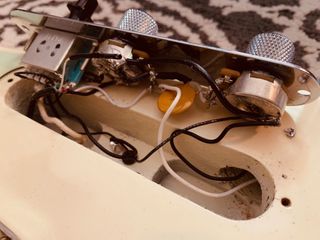
If the socket looks OK and the guitar is still dead, quickly wiggle the pickup selector switch back and forth. If the guitar starts to work, even briefly, you’re dealing with a faulty or dirty switch. Gain access to your guitar’s innards. This might mean carefully removing your scratchplate or a backplate if your guitar has rear-mounted controls. On this guitar we simply unscrew the control plate and turn it over. Ah, the genius of Leo Fender.
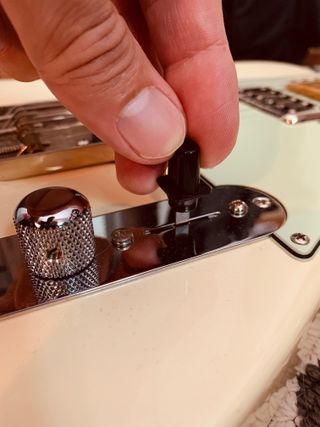
Look for loose wires and bad connections and repair as necessary. If your switch has exposed contacts, you can clean them with light sandpaper. But be gentle; the contacts on guitar components can be fragile. If the switch still doesn’t work, replace it. Draw a diagram of the wiring before you remove the old switch (or take a few photos with your phone). If your guitar has a budget/cheap-o enclosed switch, it’s not worth repairing. You’d better get a quality one.
Oh, and while you’re rummaging around in the control cavity, squirt some contact cleaner into the pots (or potentiometers). As you spray, twist the control and again test the guitar with your screwdriver. That should get you back on the road.

"Upgrading from your entry-level acoustic opens the door to an entirely new world of tonewoods, body shapes, and brands": 6 signs it's time to upgrade from your first acoustic guitar

"I'm past my prime": 5 common excuses for not learning the guitar – and 5 body and mind-boosting reasons you should





